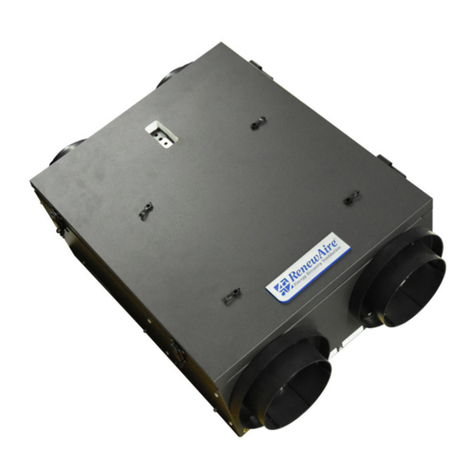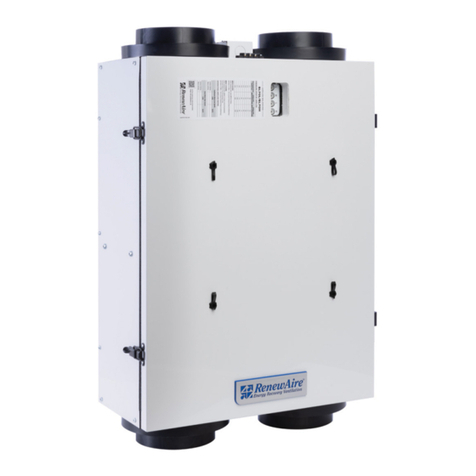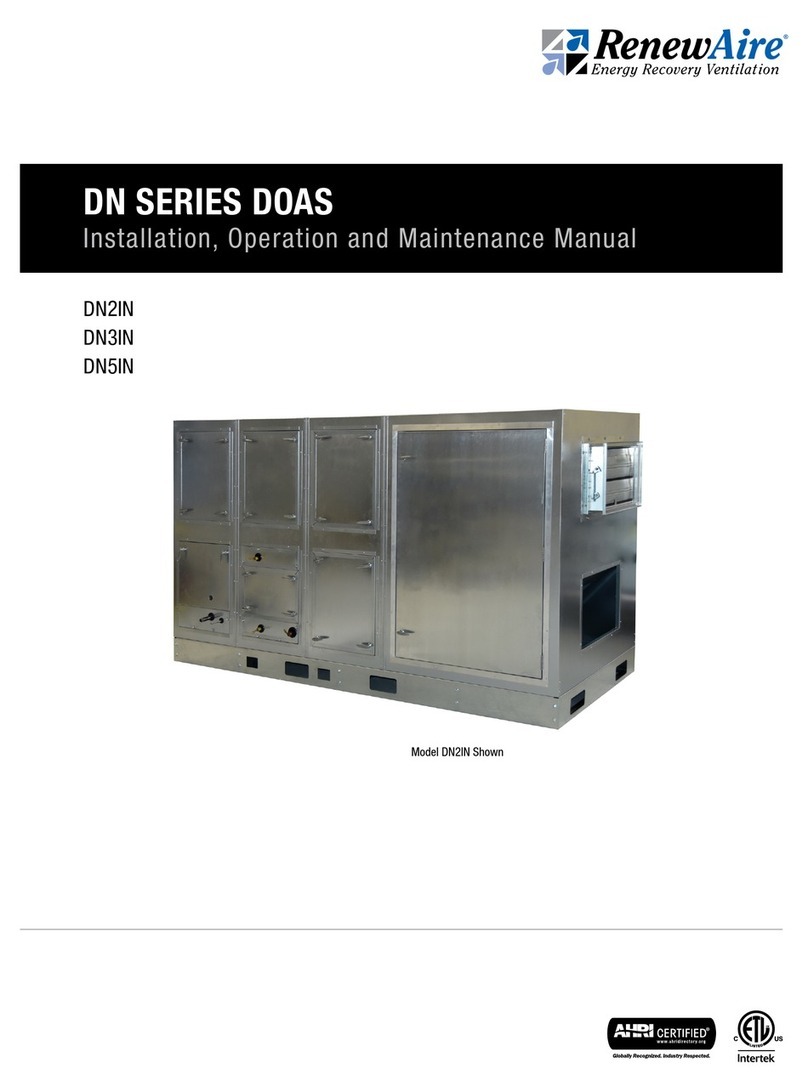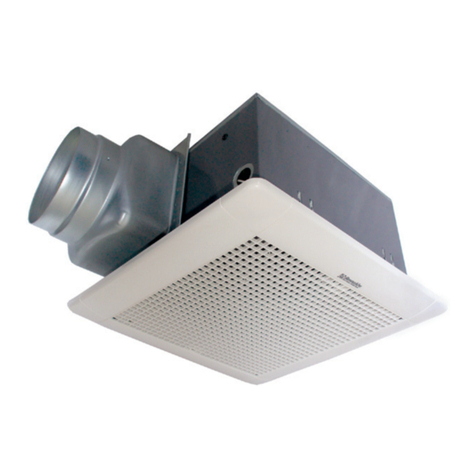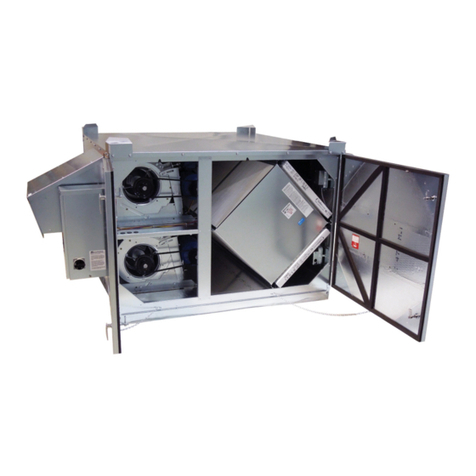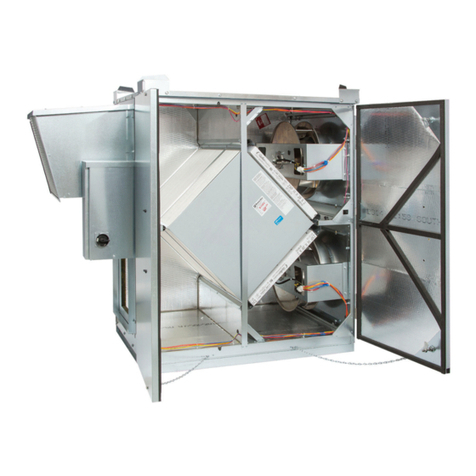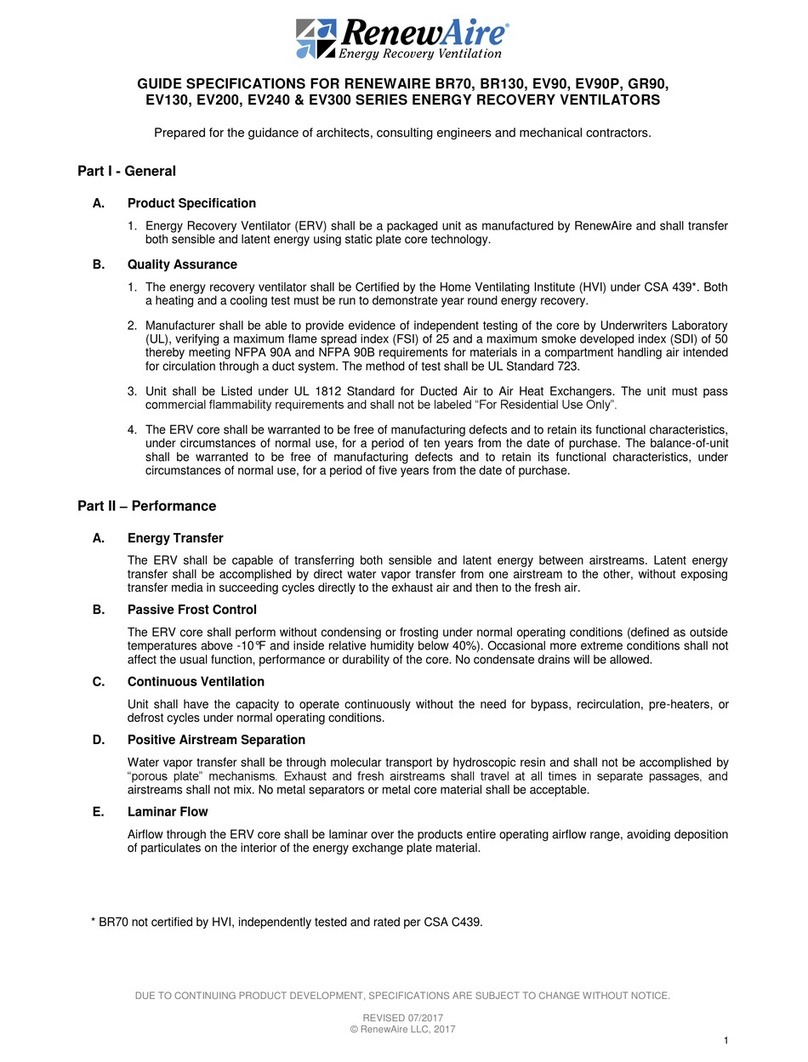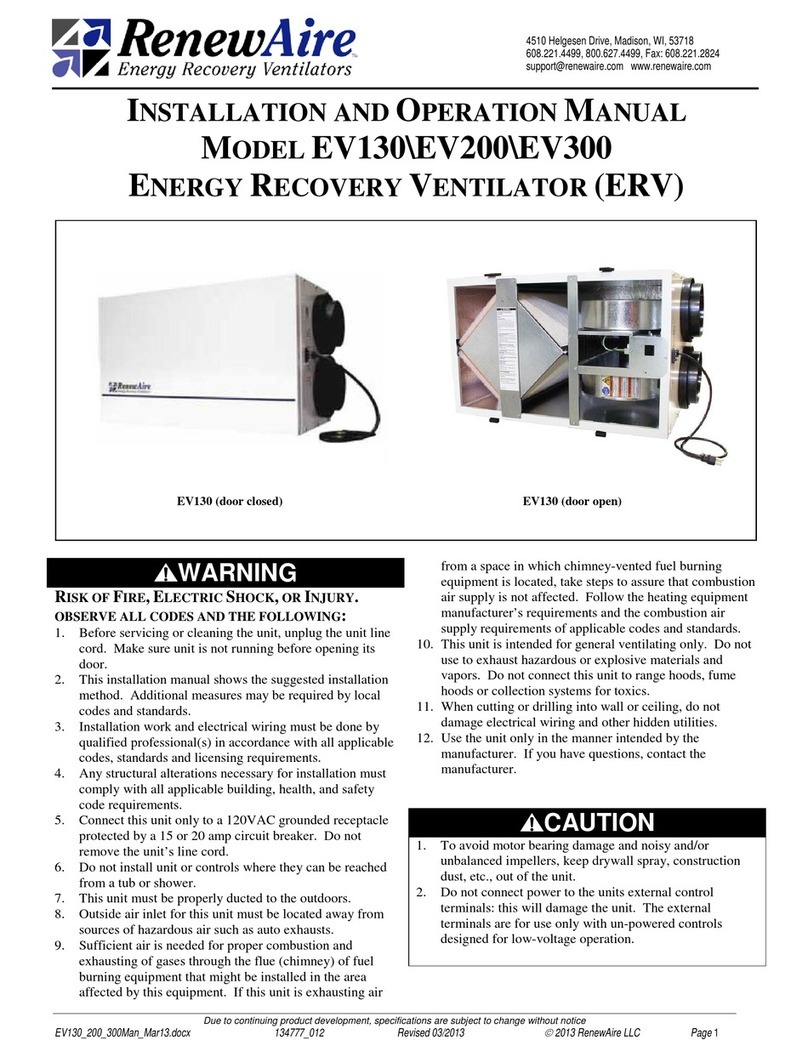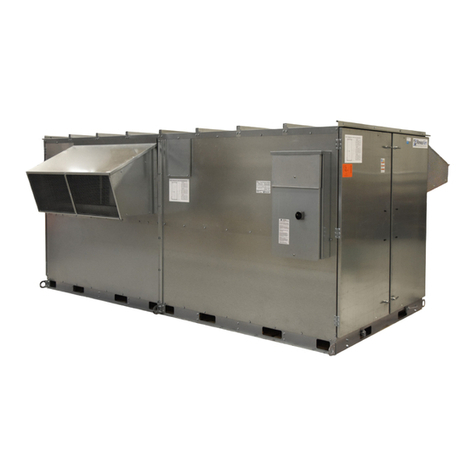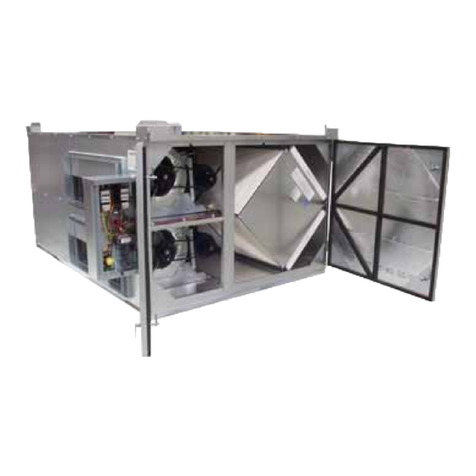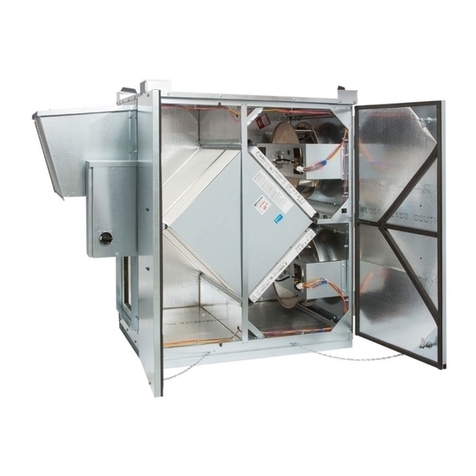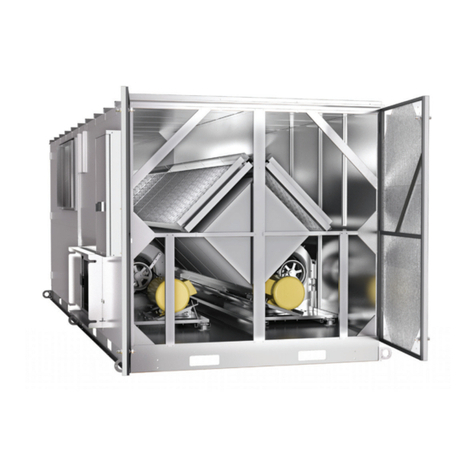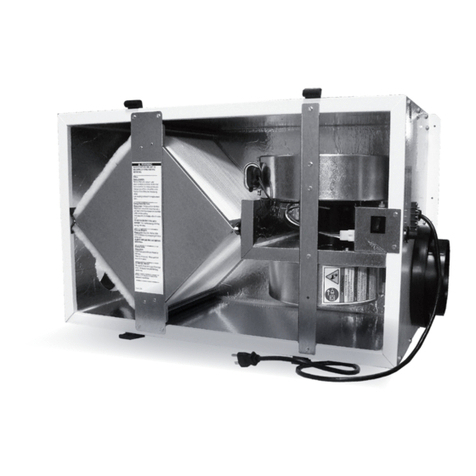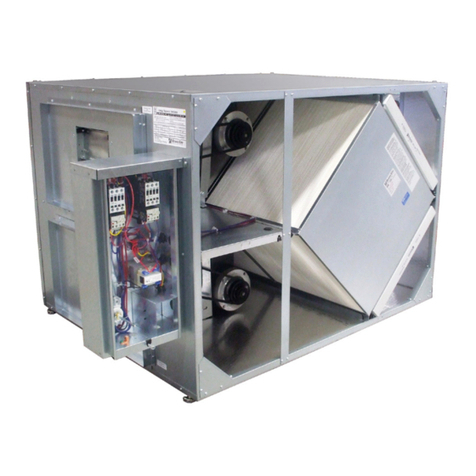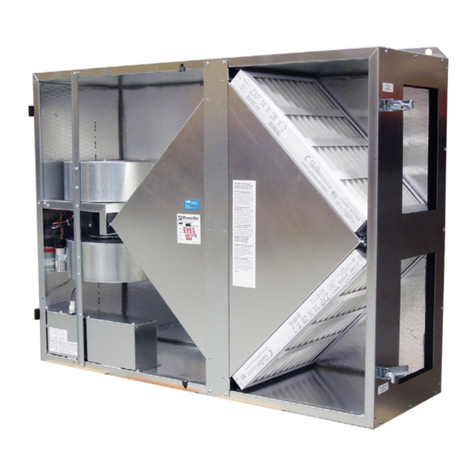
90-Series Due to continuing product development, specications are subject to change without notice. © 2013 RenewAire LLC
102779_002 90SeriesMan_Sept13.indd Revised 09/2013 www.renewaire.com Page 6
Maintenance Requirements
There is no known safe level of cigarette smoke. Any
ventilation system may provide noticeable improvement
in spaces where cigarettes are smoked, but it cannot be
expected to protect against the severe long-term health
hazards of exposure to cigarette smoke.
DO NOT WASH THE ENERGY EXCHANGE CORE.
Clean only as described above. The energy exchange
core can be replaced but is expensive.
Keep your ERV performing at its best by cleaning it as described below:
RISK OF ELECTRIC SHOCK OR INJURY.
• Before servicing or cleaning the unit, unplug the
unit line cord.
• Make sure unit is not running before opening its
door. Blower wheels are sharp and can cut.
• Do not disable the interlock switch: it is there for
your safety.
Service lters regularly:
Service lters every three months when the unit is in regular use
or as needed to keep them reasonably clean.
1. Release cam latches and carefully swing access door open.
Remove the door by sliding to one side.
2. Remove lter clips and pull out the lters.
3. Vacuum core and lters with a hose attachment.
4. Re-install lters and lter clips, (see above).
5. Re-install door, and fasten cam latches.
NOTE: The lters should be replaced after they have been
cleaned several times. The primary contact for replacement
lters for your RenewAire unit is the installing contractor. As an
alternative, you may wish to produce your own lters.
Filters may be cut from a sheet or roll of ¾” - 1” rm, spun
polyester lter media or material, similar to the existing lter in
the residential unit.
The size of each lter (2 required per unit) is as follows:
EV90/GR90 - 9 ½” x 10 ½”
EV90P - 21 ¾” x 10 ½”
NOTE: Filters must be used or the face of the energy exchange
core will become blocked by dust. The lters supplied in the unit
are usually able to keep the energy exchange core clear for many
months. Finer lters can be used but must be cleaned more often.
Clean the face of the energy exchange core yearly:
1. Remove the lters (see above).
2. Vacuum the exposed faces of the energy exchange core with
a soft brush attachment.
3. After servicing the lters, re-install them (see above).
4. Vacuum out dust from the rest of the unit case.
Dust collects only on the entering faces of the energy exchange
core. The interior of the energy exchange core stays clean even
if the core faces are dust covered.
The blower/motor package needs no lubrication:
Vacuum clean the blower wheels at the same time you clean the
face of the energy exchange core.
Purpose of an Energy Recovery Ventilation (ERV) System
Many modern homes are built air-tight for energy efciency and
comfort. The result is that natural air inltration rates are often
too low to provide acceptable indoor air quality. The solution is
to use an ERV to remove gaseous pollutants such as odors, winter-
time excess humidity, formaldehyde, smoke, radon, vapors from
cleaning products, and other chemicals. Removal of dust and
other small particles from your home is not the function of an ERV.
When should you use your ERV?
Use the ERV when windows are closed and ventilation is needed.
When the outdoor air is warmer or cooler than comfortable, the
ERV allows a quieter, more secure home with the windows closed
and also saves energy.
Using an ERV with air-conditioning:
An ERV works very well with air-conditioning because its
“enthalpy-transfer” energy-exchange core reduces the amount
of moisture in the outside air that is brought in. ERVs are the
preferred way to ventilate while air-conditioning because it
brings in less moisture than any other ventilation method.
Controlling excess humidity during cold weather:
When the ERV is rst turned on at the beginning of the heating
season (or when rst installed), it will have to run full-time for
several days to reduce indoor humidity levels. A properly set
dehumidistat will do this automatically. If your control is the
proportional timer type (PTL or FM), it should be set to “100%”
for several days whenever you have a problem with excess
humidity during cold weather.
How much ventilation is right for you?
Always reference applicable codes and standards for ventilation rate.
Different households require different rates of ventilation, depending
on the pollutants found in each home. Most people use one of two
methods to control the operation of their ventilation systems:
1. Provide a daily average of 0.35 Air changes per hour (ACH) for
your entire home. A proportional timer is the primary operating
control that allows you to reliably achieve this ventilation rate.
According to the American Society of Heating, Refrigeration and
Air-Conditioning Engineers (ASHRAE), this ventilation rate will
provide good air quality in most homes for most people.
At this rate, you will be changing the air in your home over
eight times per day. Most ERV systems are generally designed to
provide at least this ventilation rate.
Be sure to provide at least 15 CFM per person in the home. In
small homes this may mean more than nine air changes per day.
2. Ventilate enough in the winter to keep indoor humidity low.
Run the unit more to lower humidity.
In the winter, water vapor inside your home mostly comes from
people –breathing, showering, and cooking. When the outside air
is 40 degrees F or less, an ERV will reduce indoor humidity. This
helps to prevent condensation on windows.
High wintertime humidity generally means you need more ventilation
to control other indoor-air pollutants, like cooking odors.
Use your judgment:
These guidelines are a starting point. As long as the pollutants
you are concerned with are detectable (like water vapor or
odors) your nose can be a good guide, and you may nd that
fewer hours of operation will be sufcient.
For households with smokers:
Smokers will need at least double the usual ventilation rate to
satisfy non-smokers in the same household.

